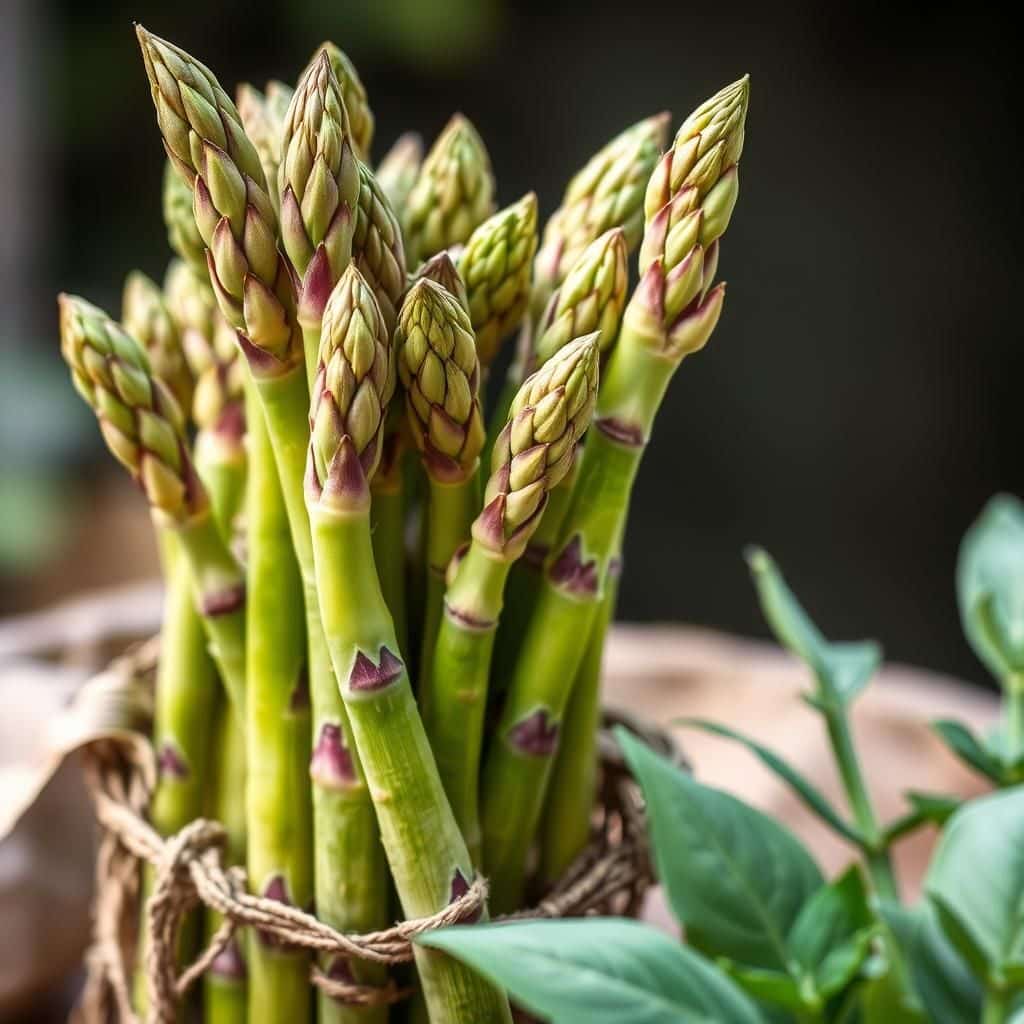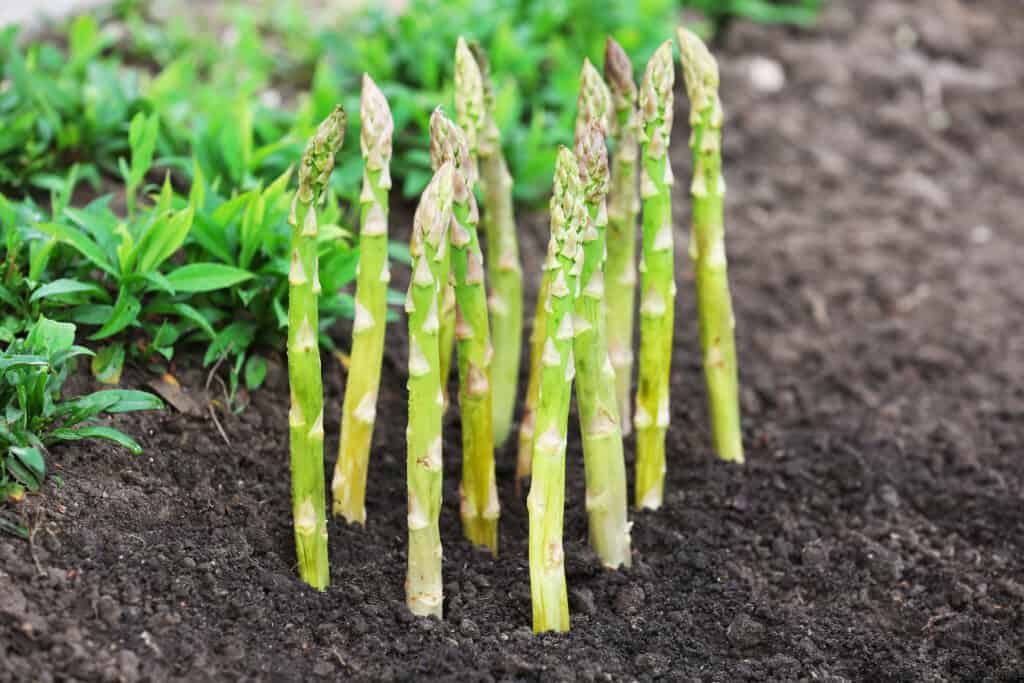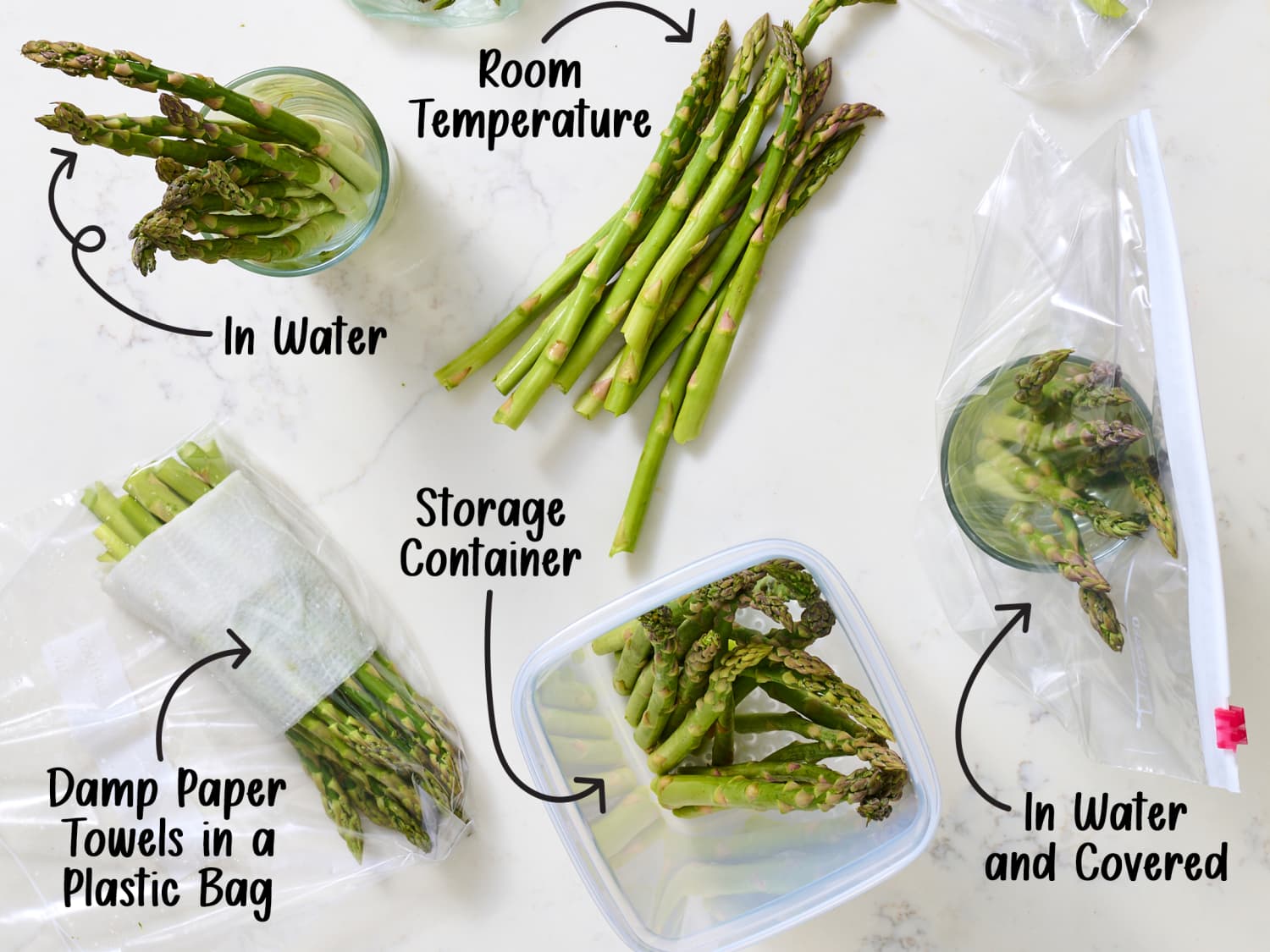The Ultimate Guide to What Plants Well with Asparagus for a Thriving Garden

Asparagus is a beloved perennial vegetable that can thrive for over 20 years in the right conditions. However, to maximize its growth potential and overall health, understanding companion planting is crucial. This guide will explore the best plants to grow alongside asparagus, highlighting beneficial relationships that enhance soil nutrients, deter pests, and promote biodiversity. By selecting the right companions, you can create a flourishing garden ecosystem that supports your asparagus and other crops, ensuring a bountiful harvest. Dive into our comprehensive tips and strategies to cultivate a thriving garden that harmonizes perfectly with this unique vegetable.
Companion Plants for Asparagus
Asparagus is a perennial vegetable that not only thrives on its own but also benefits from companion planting. Some of the best companion plants for asparagus include tomatoes, basil, and parsley. These plants help deter pests and enhance growth through mutual benefits. For instance, tomatoes emit a substance that can help to repel certain insects that might harm asparagus. Moreover, basil improves the flavor of asparagus and can suppress weed growth, while parsley attracts beneficial insects which are essential for pollination. It's important to strategically plant these companions to create a healthy ecosystem in your garden.
Benefits of Tomatoes as Companion Plants
Tomatoes are an excellent companion for asparagus because they help repel harmful pests like the asparagus beetle. Additionally, planting tomatoes near asparagus can lead to increased yields for both plants, as tomatoes also thrive in similar growing conditions. Their deep roots can improve soil aeration, benefiting nearby asparagus plants. However, it's crucial to ensure they are planted in a way that allows adequate sunlight and airflow for both crops, maximizing their growth potential.
Why Basil Works Well with Asparagus
Basil is known not only for its culinary uses but also for being a superb companion plant for asparagus. The aromatic nature of basil can deter pests such as aphids and whiteflies, which are detrimental to asparagus. Additionally, basil can enhance the flavor profile of asparagus when consumed together, making them a delightful pairing in various dishes. It’s also beneficial to plant basil around asparagus, as it helps in suppressing weed growth, allowing asparagus to thrive without competition.
Attracting Beneficial Insects with Parsley
Planting parsley alongside asparagus can attract important beneficial insects like ladybugs and hoverflies, which prey on common pests that damage asparagus. The flowers of parsley are particularly appealing to these insects, making it an effective pollinator attractor. This not only helps in promoting better pest control but also improves the overall biodiversity of the garden. As a biennial plant, parsley can also provide shade to young asparagus shoots, aiding their development.
Impact of Marigolds on Asparagus Growth
Marigolds are renowned for their ability to repel nematodes and other harmful pests that can negatively impact asparagus growth. The strong scent of marigolds can disrupt the life cycles of these pests, thereby protecting neighboring crops. Additionally, marigolds can enhance the soil structure by attracting beneficial microorganisms that contribute to a healthy growing environment. This makes them an ideal companion plant, supporting the health and productivity of asparagus beds.
Growing Herbs Alongside Asparagus
Other herbs, such as dill and coriander, can be beneficial when planted near asparagus. Dill attracts predatory insects that help control pests, while coriander can improve soil health when incorporated into the ground. These herbs provide a natural solution for pest management and can enhance the micro-ecosystem of the garden. Moreover, planting herbs can also provide culinary benefits, allowing gardeners to enjoy a variety of flavors while keeping asparagus healthy.
| Companion Plant | Benefits |
|---|---|
| Tomatoes | Repel pests, enhance yields |
| Basil | Deter pests, improve flavor |
| Parsley | Attract beneficial insects |
| Marigolds | Repel nematodes, attract microbes |
| Herbs (Dill & Coriander) | Pest management, soil enhancement |
What do you put around asparagus?
What you put around asparagus can enhance its flavor and presentation significantly. Commonly, you might consider using seasonings, oils, bacon, or cheese to create a delectable dish. Here are some popular options:
Seasonings
Adding the right seasonings can elevate the flavor profile of asparagus. Typical seasonings include:
See also:
- Salt - Enhances the natural flavor and adds freshness.
- Pepper - Provides a subtle spice that complements the vegetable.
- Lemon Zest - Adds brightness and acidity, balancing the earthy tones of the asparagus.
Oils
Using oils is a great way to keep asparagus moist during cooking while imparting flavor. Recommended oils include:
- Olive Oil - A classic choice that adds richness and depth.
- Sesame Oil - Can give an Asian twist with its nutty flavor.
- Truffle Oil - Provides a luxurious touch and an intense aroma.
Bacon
Wrapping asparagus in bacon introduces a savory and crispy element. Bacon can be used in various ways:
- Wrapped Asparagus - Simply wrap strips of bacon around each spear before roasting or grilling.
- Bacon Crumble - Cook bacon until crispy, crumble it, and sprinkle over asparagus for added texture.
- Bacon Grease - Use rendered bacon fat for sautéing asparagus, which infuses it with flavor.
Cheese
Cheese can enhance the creaminess and depth of asparagus dishes. Suitable choices include:
- Parmesan - Adds a salty, nutty flavor when grated over roasted asparagus.
- Feta - Its tangy profile pairs well with the earthy flavors of asparagus.
- Goat Cheese - Provides creaminess and a rich taste that complements the vegetable’s texture.
Herbs
Incorporating fresh herbs can provide a burst of flavor and freshness. Some great options are:
- Basil - Offers a sweet, aromatic flavor that enhances the taste.
- Thyme - A subtle earthiness that pairs well with roasted asparagus.
- Dill - Adds brightness and is particularly popular with steamed asparagus.
What does asparagus repel?

Asparagus is known for its unique taste and numerous health benefits. However, pest control is also among its lesser-known characteristics.
1. Insects Repelled by Asparagus
Asparagus has been observed to repel several types of insect pests that can damage gardens and crops. Some of the main insects that asparagus is particularly effective against include:
- Aphids - These small sap-sucking insects can weaken plants and transmit diseases.
- Spider Mites - These pests thrive in warm weather and can cause major damage to the leaves.
- Spittlebugs - Known for the frothy substance they create, they can cause serious harm to plant health.
2. Nematodes and Asparagus
Asparagus has shown effectiveness against certain types of nematodes, which are microscopic worms that can cause significant damage to roots. The sulfur compounds in asparagus release natural toxins that hinder nematode populations. Key nematodes affected by asparagus include:
- Root-knot Nematodes - These pests create galls on roots, affecting plant growth and vitality.
- Lesion Nematodes - They damage roots, leading to wilting and stunted growth.
- Cyst Nematodes - These nematodes can drastically reduce the yield of many crops.
3. Weeds That Asparagus Suppresses
In addition to repelling pests, asparagus can help in suppressing certain weeds due to its dense growth and nutrient uptake. Some of the weeds that might find it hard to thrive alongside asparagus include:
- Crabgrass - Known for its invasive nature, it competes with crops for sunlight and nutrients.
- Dandelions - These hardy weeds can quickly proliferate and inhibit plant growth.
- Purslane - A succulent weed that competes for space and water.
4. Benefits of Growing Asparagus in Companion Planting
Asparagus is often included in companion planting strategies due to its natural pest-repelling qualities. This beneficial practice encourages the growth of other plants that thrive when grown near asparagus. For instance:
See also:
- Tomatoes - Benefit from reduced pest activity when planted near asparagus.
- Peppers - Thrive alongside asparagus, enjoying similar soil and light conditions.
- Beans - These legumes fix nitrogen in the soil, which is beneficial for asparagus growth.
5. Environmental Impact of Asparagus on Pest Management
Utilizing asparagus as a pest deterrent contributes positively to environmental sustainability. By minimizing the need for chemical pesticides, it fosters a healthier ecosystem. Some environmental advantages include:
- Reduced Chemical Usage - Less reliance on synthetic pesticides leads to healthier soil and water systems.
- Promoting Biodiversity - Companion planting with asparagus supports various beneficial organisms.
- Improved Soil Health - Asparagus roots can enhance soil structure and nutrient cycling.
Where should I plant asparagus in my garden?
To plant asparagus successfully in your garden, you need to consider several key factors that ensure optimal growth and yield. Asparagus is a perennial vegetable that can produce for 15 years or more, so it's essential to choose the right location and prepare the soil adequately. Here are some essential guidelines to help you determine where to plant asparagus in your garden.
Soil Conditions
The choice of soil is critical when planting asparagus. Asparagus thrives in well-drained, sandy or loamy soil with a slightly acidic to neutral pH level, ideally between 6.5 and 7.0. Here are some considerations for soil conditions:
- Well-Drained Soil: Ensure that the site does not retain water; asparagus roots are sensitive to waterlogging.
- Organic Matter: Incorporate compost or well-rotted manure to improve soil structure and fertility.
- Soil Testing: Conduct a soil test to assess pH and nutrient levels, making amendments as necessary.
Sunlight Requirements
Asparagus requires plenty of sunlight for healthy growth. Choose a location that receives full sun, which is vital for optimal photosynthesis. Here are key aspects to consider regarding sunlight:
- Full Sun Exposure: Aim for at least 6-8 hours of direct sunlight each day for vigorous growth.
- Avoid Shady Areas: Avoid planting near trees or tall structures that may block sunlight.
- Seasonal Changes: Be aware of seasonal changes in sunlight; ensure the chosen site remains sunny throughout the growing season.
Spacing and Layout
Proper spacing and layout are critical after selecting an appropriate site for planting asparagus. This ensures healthy plant development and accessibility for harvesting. Consider the following:
- Row Spacing: Space asparagus rows 4-5 feet apart to allow for growth and airflow.
- Plant Spacing: Within each row, space plants 12-18 inches apart to give them enough room.
- Maintenance Access: Design the layout with easy access for maintenance, watering, and harvesting.
Water Drainage
Good drainage is crucial for asparagus as it prevents root rot and other moisture-related issues. You need to assess and ensure proper drainage in the chosen planting area. Consider these factors:
- Site Evaluation: Assess the site for drainage issues; avoid low-lying areas where water may accumulate.
- Raised Beds: Consider building raised beds if drainage is a concern in your garden.
- Drainage Techniques: Implement drainage techniques such as ditches or gravel beds if necessary.
Companion Planting
Understanding which plants can coexist harmoniously with asparagus will enhance its growth and protect it from pests. Look into suitable companion plants for beneficial plant relationships:
- Compatible Plants: Happy companions include tomatoes, peppers, and basil, which can enhance growing conditions.
- Avoid Certain Companions: Avoid planting onions and garlic near asparagus as they may compete for nutrients.
- Crop Rotation: Practice crop rotation with asparagus to prevent soil depletion and pest accumulation.
Questions from Our Readers
What companion plants grow well with asparagus?
Strong companion plants for asparagus include tomatoes, basil, and marigolds. These plants not only enhance the growth of asparagus but also help in repelling pests and improving overall garden biodiversity.
Should I plant herbs with asparagus?
Yes, planting herbs like thyme and sage with asparagus is beneficial. These herbs can provide natural pest control and can also compliment asparagus in the kitchen, making them a great addition to your garden.
See also:
Are there any plants that should not be planted with asparagus?
Absolutely, you should avoid planting onions and garlic near asparagus. They are known to compete for nutrients and can inhibit the growth of asparagus due to their allelopathic properties.
What is the planting distance for companion plants with asparagus?
When planting companion plants with asparagus, maintain a distance of about 12 to 18 inches. This spacing ensures that each plant receives adequate sunlight, air circulation, and nutrients, promoting healthier growth for all plants involved.

If you want to read more articles like The Ultimate Guide to What Plants Well with Asparagus for a Thriving Garden, we recommend you check out our Gardeners category.
Leave a Reply

Related Articles